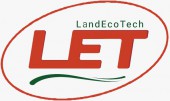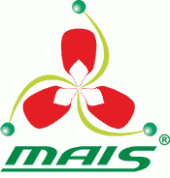News
12.06.2025
In Search of Compromise: What Will Future Trade Between the EU and Ukraine Look Like?

A short but important era of open trade between the EU and Ukraine has come to an end. Relations between the two sides, following the expiration of the Autonomous Trade Measures (ATM), are currently governed by a transitional arrangement. This regime is based on a return to pre-war tariff quotas under the Deep and Comprehensive Free Trade Area (DCFTA) Agreement, using the formula of 7/12 of the 2021 quota volumes.
Possible consequences for the domestic agricultural market were discussed by the Ukrainian Agribusiness Club (UCAB) during the online panel “EU-Ukraine Agrifood Trade after the ATMs: Navigating the Uncharted Waters.”
A new, less favorable era
The dialogue on the prospects for European integration of Ukraine’s agricultural sector began more than a year ago, with the main goal of highlighting the importance of integration both for Ukrainian agriculture and for the EU. This was emphasized in the opening remarks by President of UCAB Alex Lissitsa:
“UCAB has been holding numerous meetings not only online but also directly in Brussels — in the European Parliament, with diplomats from member states, and with European business associations. The purpose of these meetings was to understand what would happen after June 6. Unfortunately, the decision was constantly postponed. Now a new era begins, and it is not a pleasant one — neither for Ukraine nor for the EU. The European Union has deliberately refused to seek a solution for the post-ATM period or to extend the regime, and now we are looking for new opportunities. At the same time, we continue to convince our counterparts that agri-trade with Ukraine is in the EU’s own interest.”
Towards Stable Rules
The implementing regulation published by the European Commission defines the boundaries of trade between Ukraine and the EU for a short transitional period until the end of 2025 — and this is not the worst possible scenario, according to Oleksandra Avramenko, Head of European integration committee UCAB.
In essence, the worst-case scenario for Ukraine would have been a simple return to the DCFTA conditions as of June 6, which would have meant that some tariff quotas would already be fully or nearly fully exhausted.
Oleksandra Avramenko:
"However, the European Commission has introduced a so-called bridge between the ATMs and the future trade regime, which, we hope, will begin on January 1, 2026 — or perhaps even earlier, following the conclusion of discussions and implementation of Article 29 of the Association Agreement. That will finally provide more predictable trade rules with the EU."
As of June 6, 2025, a transitional regime has been introduced, partially restoring quotas on nearly 30 product groups. This means the list of seven "sensitive" products covered by the 2024 ATM version (poultry meat, eggs, sugar, corn, oats, groats, and honey) is being expanded. Additions include wheat and milling products, dairy products, tomato paste, ethanol, and others.
The new quotas will be in effect from June 6 through December 31, 2025, and will amount to 7/12 of the annual volumes stipulated by the Association Agreement — corresponding to the seven months remaining in the year.
According to UCAB’s preliminary estimates, the transitional trade regime with the EU and the introduction of trade quotas at 7/12 of the 2021 volumes will result in an estimated loss of €1.1 billion in export revenues by the end of 2025. However, these losses would be significantly smaller than under a full return to the 2021 trade regime, which could cost up to €3.3 billion by the end of the current year.
In other words, Ukraine has been granted some additional export opportunities, though duty-free volumes remain far below desired levels. For instance, the sugar quota in 2021 was 20,000 tonnes, while under the ATMs it reached 262,000 tonnes. A return to the DCFTA regime would have meant the complete halt of sugar exports by the end of the year. Under the 7/12 formula, however, Ukraine can still export approximately 11,000 tonnes of sugar duty-free until the end of the year.
Small Producers Hit Hardest
With the reintroduction of quotas on wheat and its processed products, potential losses are estimated at around $660 million. The duty on wheat products — set at $175/tonne — makes them virtually inaccessible to EU consumers.
The sugar sector could face losses of approximately €190 million, powdered milk producers around €15 million, and tomato paste manufacturers about €13 million.
Oleksandra Avramenko: "The new trade conditions allow us to survive during the transition period, but this is still far from an ideal scenario for the Ukrainian economy and farmers. First, the war continues. Second, there are logistical challenges — Ukrainian exporters still struggle to reach their traditional markets. We would gladly return to them, but that’s not possible at the moment. Therefore, we still need access to the EU market."
The new rules will primarily impact small and medium-sized farmers. Despite the prevailing narrative about large agricultural companies, in reality, 75% of Ukraine’s agricultural sector consists of small and medium producers.
"The production of goods affected by the quotas involves many small producers, including those working close to the front lines in southern, eastern, and northern Ukraine. They risk their lives every day and need greater support," Avramenko added.
New Conditions for Producers
Are There Alternatives to the EU Market? Representatives of Ukrainian industry associations addressed this question.
Dairy: Volumes Are Very Small
The ATM regime was crucial for the dairy sector, which lost its traditional export markets during the war. Liberalized trade made it possible to maintain raw milk prices for dairy farms, explained Yelyzaveta Sviatkivska, Coordinator of the EU Integration Committee, Union of dairy enterprises of Ukraine:
“Right now, skimmed milk powder, whey powder, and butter are at risk — prices for these products have been falling over the past two weeks. Exports have been almost nonexistent due to uncertainty about future trade conditions.”
The annual quota for skimmed milk powder is 5,000 tonnes, yet last year Ukraine exported 15,000 tonnes, and about 8,000 tonnes in the first five months of this year. By the end of the year, Ukraine will be allowed to export no more than 11,000 tonnes duty-free, even though it produces significantly more.
A similar situation exists with butter: the quota is only 3,000 tonnes, but 3,500 tonnes have already been exported in the first five months of this year. Only an additional 1,750 tonnes can be exported duty-free by the end of the year, while demand for exports stands at around 5,000 tonnes. Clearly, the allocated volume is insufficient.
“The decline in prices for dairy products directly affects farmers, as they are part of the supply chain. Raw milk prices have already dropped,” added Yelyzaveta Sviatkivska.
According to her, the UDEU has established dialogue with the European dairy sector. The union is now working on a roadmap for integrating the Ukrainian dairy industry into EU standards by 2030, which also includes sustainability goals and trade mechanisms.
“Harmonization of legislation is our top priority. The closer we are to EU standards, the better our chances of expanding quotas or achieving trade liberalization during the revision of Article 29 of the Association Agreement,” the expert concluded.
Berries Will Find New Markets
Quotas and other artificial restrictions limit market development and trade, and although Ukrainian products will eventually find their way, the biggest problems will be faced by raw material producers, said Taras Bashtannyk, Chairman, Ukrainian Fruit and Vegetable Association.
Ukraine is one of the world’s largest exporters of wild berries. Back in the 1990s, when the export of frozen blueberries began, the first buyers were in neighboring countries. As the market grew, frozen strawberries and raspberries were exported through the same channels, gradually reaching Western European countries.
Taras Bashtannyk: “Two years ago, when Poland created obstacles for Ukrainian frozen raspberry exporters, the berries were redirected to other EU countries. Ironically, Polish importers earned more from raspberries than Ukrainian producers. Now, as European tariffs emerge, berries will again be directed to new markets. The issue, however, will affect the raw material producers.”
Tomato Paste – Investment Will Follow the War
Ukraine’s tomato paste production facilities are located in the south. After parts of southern Ukraine were occupied, four of the largest tomato paste processing plants were lost.
“Ukraine is temporarily a net importer of tomato paste rather than an exporter. At the moment, we only have relatively small processing capacities. However, this sector will certainly become attractive for investment after the war ends, as the facilities need to be located in southern Ukraine,” Taras Bashtannyk explained.
Apple Processing Plants with Western Investment
In contrast, Ukraine is actively exporting apple concentrate, with exports to the U.S. market growing most rapidly. Bashtannik noted that Ukrainian producers account for around 8% of global apple concentrate production. However, three out of the four largest processing plants are owned by Austrian and German investors.
“The biggest challenge will fall on small-scale farmers and households supplying apples and tomatoes to processing plants,” said Taras Bashtannyk.
Flour Exports May Halt
Before 2021, the EU market was essentially closed to Ukrainian millers, since the wheat and flour share a single quota, and wheat exporters used up 99.9% of it. In 2024, Ukraine exported around 24,000 tonnes of flour to the EU. However, this represents just 0.05% of the EU’s total wheat flour market, which stands at 42 million tonnes per year. This volume is not even enough to cover consumption by Ukrainians currently residing in the EU, said Kostiantyn Ihnatenko, a representative of the Union "Millers of Ukraine":“The ‘Millers of Ukraine’ union advocates for separate quotas for wheat and flour. Our clients are small bakeries and local supermarket chains that are willing to pay €5–10 more per tonne for flour from, say, Poland, rather than deal with importing or obtaining permits.”
There are about 550 processing enterprises currently operating in Ukraine, most of which source raw materials from smallholder farms. Many contractors involved in logistics and related services also rely on these producers.
In 2024, Ukraine produced around 2.2 million tonnes of wheat flour, with about 95% sold on the domestic market. Only 84,000 tonnes were exported, 45% of which went to the EU.
Moreover, the open market has spurred development. Since the start of the full-scale invasion, the 10 largest wheat flour producers in Ukraine have invested approximately €10 million in improving production quality.
“Due to logistical challenges, closing the European market would practically stop flour exports. Furthermore, many members of our association have long-term contracts they can no longer fulfill,” Ihnatenko added.
Bioethanol — Not a Threat
The European Union imports 2 million cubic meters of ethanol annually, with the main suppliers being Pakistan, the United States, and Brazil. Ukraine ranks only sixth or seventh among these exporters, according to Taras Mykolayenko, Executive Director of Ukrbioethanol.
He noted that until recently, Ukraine operated 17 plants that last year produced 180,000 tonnes of bioethanol, processing around 600,000 tonnes of grain and molasses. One of the major bioethanol plants in the Sumy region was recently attacked by drones.
Until 2019, ethanol exports from Ukraine were virtually nonexistent. In 2020–2021, there was modest growth to 24,000–27,000 cubic meters, driven by one producer obtaining the necessary certifications to enter the European market. From 2022 to 2024, ethanol exports to the EU increased significantly, with annual growth exceeding 50%. This was due in part to low corn prices and, more importantly, to a sharp increase in fuel imports from the EU—over €6 billion, or about 7 million tonnes. To avoid sending empty railcars and tankers back to Ukraine, ethanol was used as return cargo, which reduced logistics costs by up to 50%. As a result, ethanol exports to the EU reached 120,000 tonnes last year, 100,000 tonnes of which was bioethanol. Exports were projected to reach 140,000 tonnes this year, but that will not happen due to newly introduced quotas.
As of May 1, Ukraine introduced a mandatory 5% bioethanol content requirement in fuel. This is expected to boost domestic demand for ethanol to 60,000 tonnes this year and approximately 110,000 tonnes next year.
“All this ethanol is currently imported from the EU—mainly from Poland and Hungary—as part of blended fuel, since blending in Ukraine is considered too dangerous,” added the expert.
Ukraine is also a major consumer of European alcoholic beverages (trade group 22), including cognac, whiskey, and wine. Imports in this category doubled during the war, reaching around €500 million last year, while Ukraine exported only €164 million worth of goods, half of which was ethanol.
Due to the rising price of corn (up to €230/tonne) and falling bioethanol prices (€580/tonne), Ukrainian products are no longer competitive.
“Only ethanol produced from waste is exported. It poses no threat to the European market because it cannot compete with French or Hungarian bioethanol,” emphasized Taras Mykolayenko.
According to him, the overall export situation is further complicated by a distorted excise tax policy. As of January 2025, Ukrainian farmers are already paying 20–25% more for fuel than their EU counterparts (especially in Poland), and with further increases in diesel excise taxes expected next year, this gap may exceed 30–35%.
“This is gradually but inevitably eroding the competitiveness of Ukraine’s agricultural sector,” he concluded.
Place for Ukrainian Sugar
Yuriy Sharanov, President, Committee for European Industrial Sugar Users (CIUS) reminded that by the end of 2025, Ukraine will be allowed to supply about 11,000 tonnes of sugar to the EU. This accounts for just 0.01% of the total market demand.
Yuriy Sharanov: “When the ATM conditions were in effect, Ukrainian sugar played an important role in balancing the market, as the European sugar market is generally import-dependent. In 2023, when Ukraine had effectively run out of sugar, some European buyers inquired whether we could resume certain supplies due to critically low stocks.”
It is likely that Europe is counting on sugar from Cuba, for which the quota is 70,000 tonnes, but this supply may not arrive, as Cuba needs the sugar for its domestic rum production.
“Policymakers should adopt a longer-term perspective. Just look at the current balance and let’s move toward a beneficial partnership with Ukraine! Ukrainian agricultural imports are an extension of the supply chain for Europe’s processing sector,” urged Yuriy Sharanov.
Supporting Competitiveness
The share of Ukrainian goods in EU imports is small compared to the volume produced within the EU itself. And of course, Ukrainian supplies will simply be replaced by products from other countries — sugar from Latin America, flour from Turkey (which will likely be made from Ukrainian grain), and dairy products from the UK or New Zealand.
At the same time, not only is Ukraine losing liberalized access to the EU market, but EU consumers — specifically agri-food processors — are also losing access to Ukrainian products, which often support their competitiveness in third-country markets and help ensure production stability, as demonstrated in the case of sugar.
Oleksandra Avramenko: “European processors also profit from Ukrainian raw materials by re-exporting them as value-added goods to third-country markets. Moreover, Ukrainian products are made in accordance with EU norms and standards, and producers have been doing their utmost to comply with them since 2016.”
The temporary liberalization period served as a kind of “demo version” of what EU membership for Ukraine could look like. According to participants of the online discussion, it demonstrated that there are relatively few sensitive or problematic products and that the impact of Ukrainian imports was minimal — even in the case of goods subject to quotas.
The original material was taken from the AgroPortal.ua





































































































































































